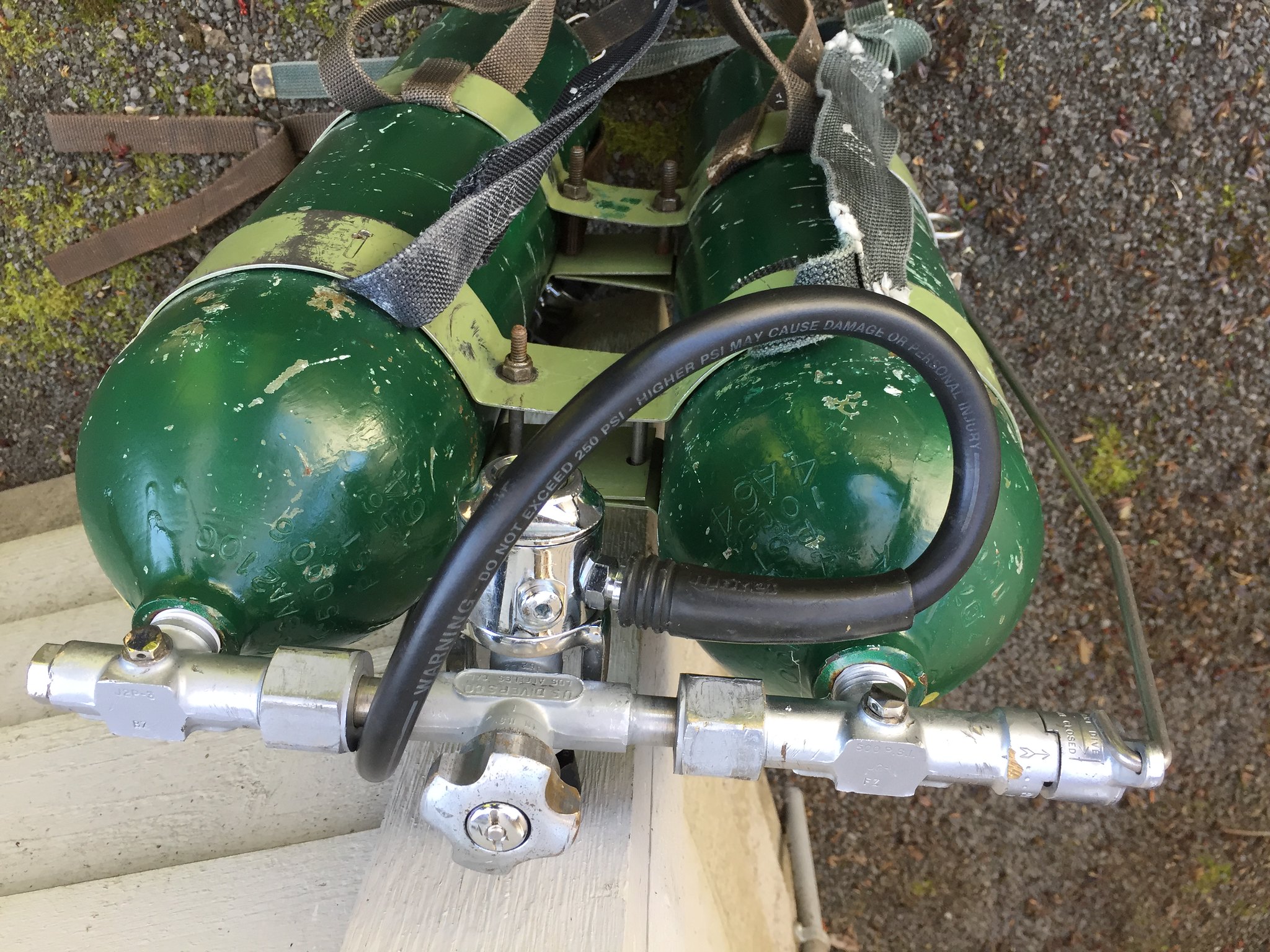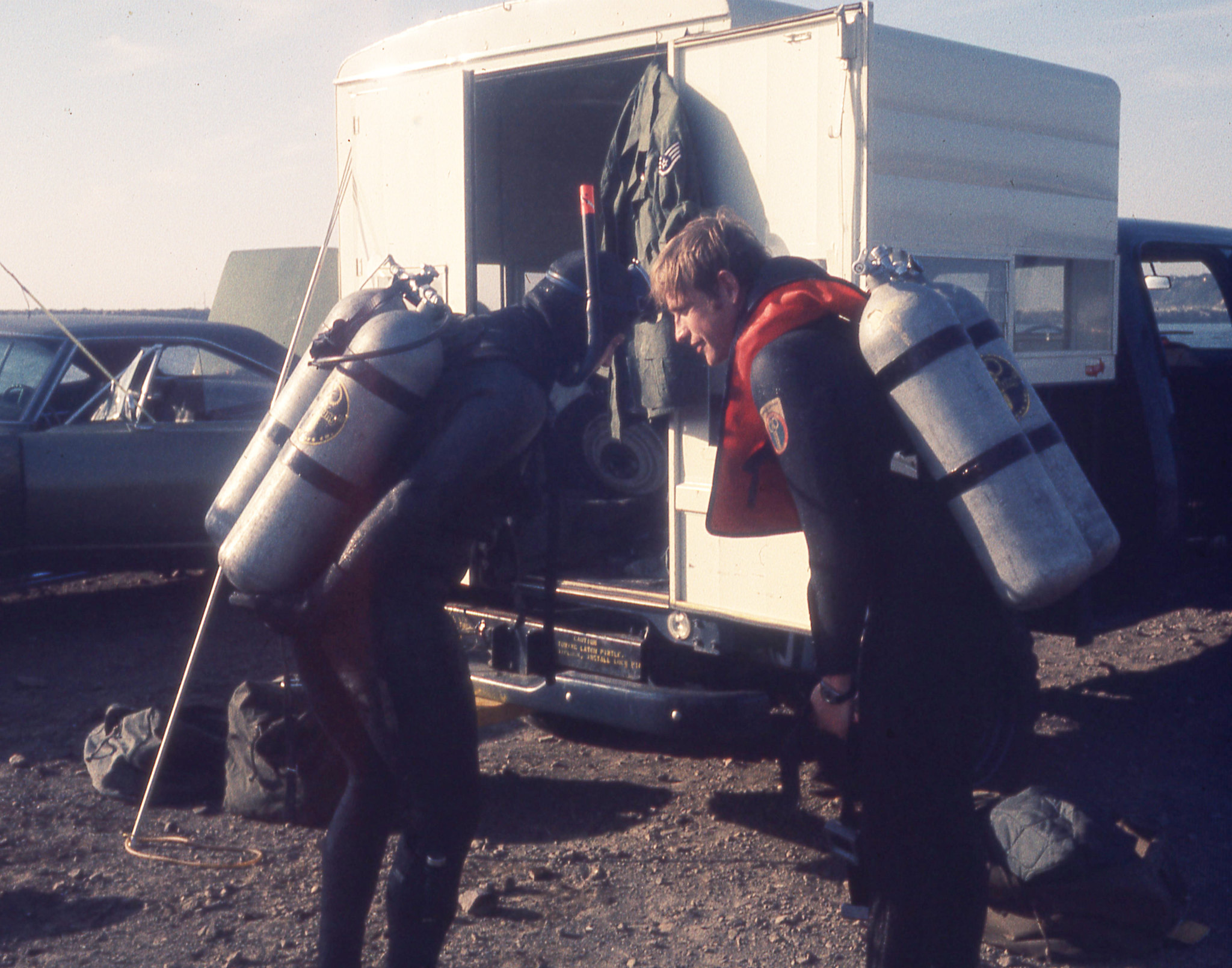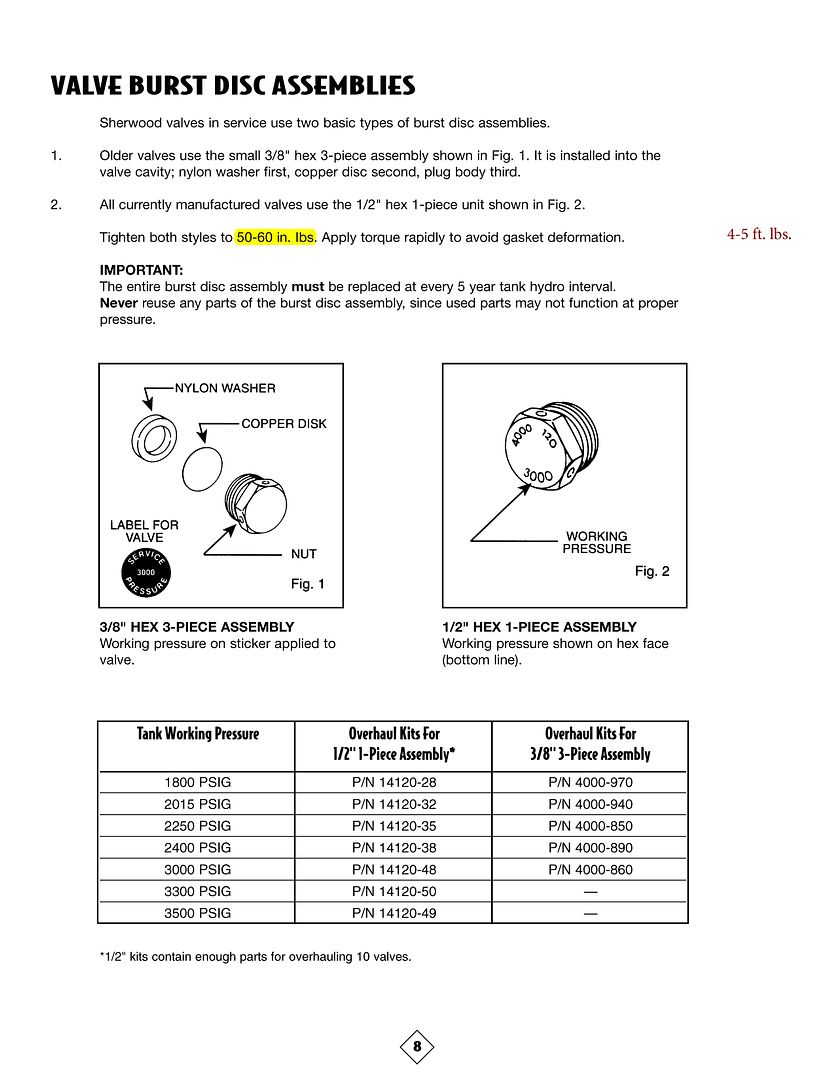|
|
Post by scubalawyer on Feb 9, 2023 8:32:44 GMT -8
Nothing major to report. Had a few steel 72's sitting around that were valve-less so picked up these two Dacors to overhaul and install. They have the spg port so that is cool.  |
|
|
|
Post by SeaRat on Feb 9, 2023 10:23:07 GMT -8
I have several regulators that have J-valves built into their first stages. Here's a Healthways version:  448CE75D-ED70-4127-AC0E-94BD5E57657C 448CE75D-ED70-4127-AC0E-94BD5E57657C by John Ratliff, on Flickr  F5A6E2BC-F689-4028-9D57-420D47442D97 F5A6E2BC-F689-4028-9D57-420D47442D97 by John Ratliff, on Flickr Here's a U.S. Divers Company Calypso-J mounted on my twin 52s. Note that the manifold also has a J-valve. What this combo gives is a double reserve, first from the regulator when the cylinder pressures get to 300 psi, and second 500 psi held back in the left cylinder.  IMG_1464 IMG_1464 by John Ratliff, on Flickr  IMG_1465 IMG_1465 by John Ratliff, on Flickr Note in the Calypso-J photo above, I have equipped it with a pull from a parachute cord. That, on the end, is a birdnest coil, so it has a good handle to pull the reserve. This combo protects the J-valve from inadvertent tripping too. A 300 psi reserve on the center manifold is the equivalent of 600 psi on the manifold.  IMG_1462 IMG_1462 by John Ratliff, on Flickr You can see the birdnest coil below the cylinders. John |
|
|
|
Post by vance on Feb 9, 2023 15:46:02 GMT -8
Those Dacor (and other) tank valves with HP ports are a really good option for vintage divers using short yoke DH regulators w/o HP ports who want to track their tank pressure. I think they are great, but the fact that the SPG is attached to the tank and not the regulator is awkward when handling the tank. Yes, care can be taken, but HP hoses are vulnerable, so it's one more worry.
My Dacor valves with an HP port shut the port off when the valve is closed. I have some pillar valves with ports, but I don't know if they pressurize the HP port when the tank valve is off. That would be hard on the SPG and make it impossible to remove the SPG w/o draining the tank if it was always charged.
|
|
|
|
Post by Tusker on Feb 9, 2023 16:15:32 GMT -8
Installing the new all-in-one burst disks on these is a touch difficult as you don't have enough room to fit the socket of your torque wrench on it. If anyone has ways around this I'd love to know, I still have one I need to install the disk on.
Jacob
|
|
|
|
Post by james1979 on Feb 9, 2023 17:02:45 GMT -8
Installing the new all-in-one burst disks on these is a touch difficult as you don't have enough room to fit the socket of your torque wrench on it. If anyone has ways around this I'd love to know, I still have one I need to install the disk on. Jacob Could always use a combination wrench and spring scale... Length of wrench times pull on spring scale equals torque. Or use German torque (guten tight!). |
|
|
|
Post by scubalawyer on Feb 9, 2023 21:08:39 GMT -8
Installing the new all-in-one burst disks on these is a touch difficult as you don't have enough room to fit the socket of your torque wrench on it. If anyone has ways around this I'd love to know, I still have one I need to install the disk on. Jacob Easy. I just use a crows foot torque wrench.  |
|
|
|
Post by Tusker on Feb 11, 2023 17:11:16 GMT -8
And that is exactly the sort of thing which would have made life much easier when I installed the first one. Thank you! Und Herr James, benutze ich jedes Deutschen Drehmoment  Jacob |
|
|
|
Post by vance on Feb 11, 2023 18:31:56 GMT -8
What is German torque? I want to use it too!
|
|
|
|
Post by SeaRat on Feb 11, 2023 18:54:42 GMT -8
I really like J-valves, and have been using them since the early 1960s. I don't have to look at a gauge constantly, and I rarely dive to much depth (22 feet in the Clackamas River is most likely the deepest I've dived recently).  Subtidal Clambed Survey006 Subtidal Clambed Survey006 by John Ratliff, on Flickr In the 1970s when I was experimenting with buoyancy control and decided to get a U.S. Divers Company full-face mask for my double hose regulator, I was using a J-valve in conjunction with a gauge.  UDS-1 Valve inside case UDS-1 Valve inside case by John Ratliff, on Flickr When I was diving my UDS-1 from U.S. Divers Company, I liked using their J-valve in the manifold, as that gave me a 750 psi reserve, which when equalized into the other two cylinders, was about 300 psi. I had a gauge with this system too.  UDS1bal UDS1bal by John Ratliff, on Flickr  IMG_1453 IMG_1453 by John Ratliff, on Flickr When on a twin manifold, the reserve lever can easily be switched to pointing toward your back, rather than away, making it almost impossible to be inadvertently tripped. Here I've got a MR-12 III mounted on the manifold, which is how we dove and jumped them in the USAF.  304th ARRSq historical002 304th ARRSq historical002 by John Ratliff, on Flickr This is how USAF Pararescue dove our twin 72s in the mid-1970s.  IMG_1022 IMG_1022 by John Ratliff, on Flickr Here is the Scubapro J-reserve with the lever reversed. This can be done with the Dacor J-valve too (I have one in the shed which I just confirmed was on reversed).  IMG_2796 IMG_2796 by John Ratliff, on Flickr The J-reserve doesn't work at all with the Dacor Nautilus CVS (Constant Volume System) as the lever cannot be reached, and the pull rod also cannot be reached, and therefore it is always down on this system. John |
|
|
|
Post by vance on Feb 11, 2023 18:54:57 GMT -8
As a mechanic with experience spanning nearly 60 years, I'd say crow's foot adapters are never useful.
Except here, it looks like!
|
|
|
|
Post by mackintoshman on Feb 17, 2023 14:44:22 GMT -8
Question, what is the torque on the disc?
|
|
|
|
Post by cnotthoff on Feb 17, 2023 15:40:53 GMT -8
Question, what is the torque on the disc? 55 inch pounds |
|
|
|
Post by scubalawyer on Feb 18, 2023 2:34:51 GMT -8
Question, what is the torque on the disc? 55 inch pounds OK, now I have a question. I have read that burst discs should be torqued at 55 in lb, but I have also read (and been advised) it is 110-120 in lb. Is it different with the older 3-piece set versus the newer all-in-one plug? Inquiring minds that will be installing a 3-piece burst disc assembly today want to know. 🤔 P.S. I was told by a dive shop tech just today it should be 14 ft lb (which is like 160 something in lb). Where I used to be certain, I am now confused. |
|
|
|
Post by luis on Feb 18, 2023 6:15:29 GMT -8
Hi Mark, It is not so much if it is a one piece versus a three-piece burst disc… I think the confusion is because there are a couple of different sealing materials for burst disc assemblies. The majority (and definitely the ones sold by Sherwood) use a Nylon or Teflon gasket and you don’t want to over torque them or you could experience a lower pressure, disc-rupture. The bolt is also the disc cutter. The inside edge of the bolt provides the shearing edge for the disc. So, you don’t want to over torque. Then I have seen some burst disc that actually use a copper sealing ring. I have several of those disc (and I have avoided using them) and they all have the required torque value stamped on them. If you have a disc with the torque value stamped on them, I would definitely follow that recommendation. If the torque value is not stamped, and the disc has the typical soft (Nylon or Teflon) gasket, I would follow the Sherwood torque recommendation. This would apply to either one piece or three-piece burst disc assembly. If the torque value is not stamped, and it has a copper sealing disc, I would probably not use it unless I had some information directly from the manufacturer. I have never encountered this… but I guess it is possible… Good luck  |
|
|
|
Post by scubalawyer on Feb 18, 2023 8:20:34 GMT -8
I finally got around to actually reading the directions that came with my burst disk.  Says 90-110 in lb., although it has a nylon gasket. Guess I should do what the manufacturer says.  |
|